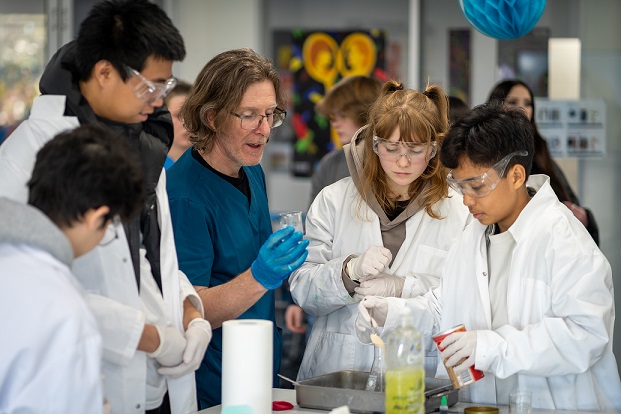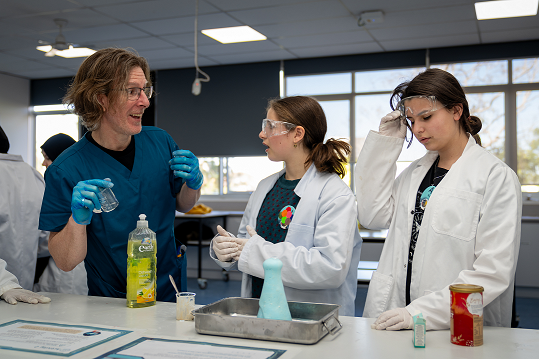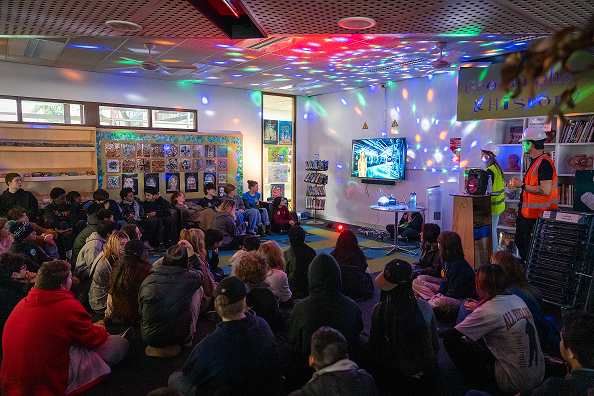
With digitisation and automation rapidly transforming industries across the world, Australia’s education policymakers and experts are urging a greater focus on improving STEM education in the nation’s schools.
The global STEM education in K-12 market size is expected to reach $206bn by 2030, according to a new report by Grand View Research, and so it’s little surprise that companies in the sector are partnering with schools to help equip the young people who may one day become their employees.
Fortunately, this push appears to be paying off, with the most recent TIMSS report showing that Australia has climbed into top 10 in Year 8 maths and science, and Year 4 science – progress the government hopes to maintain through a raft of changes to the Australian Curriculum.
Recently, Australia celebrated National Science Week, with the theme “Innovation: Powering Future Industries.” During the week, more than 10,000 students across Australia transformed their classrooms into dramatic, science lab escape rooms and raced against the clock to complete STEM-focussed logic puzzles and science experiments to stop a catastrophic hydrogen explosion.
Run by Stile Education – Australia’s number one science curriculum, founded by Dr Alan Finkel in 2012 – this year’s Escape Room was set in a green hydrogen production facility that featured collaborative hands-on experiments.

Students from schools around Australia worked in groups to solve a series of eight challenges centred around Renewable Energy, Green Hydrogen, and Climate Change over 45 minutes and inputted coded answers into a simulation before the timer ran out.
The Escape Room’s focus on hydrogen was motivated by reports showing that Australia could become a global leader in green hydrogen production and export, using renewable energy – an industry that’s set to boom in the coming decades.
From fuelling space exploration to powering cars with hydrogen fuel cells, hydrogen production will play a major role in future industry that will help dramatically curb the effects of climate change. It will also be key to helping Australia reach its target of zero emissions by 2050, which will be achieved in part by today’s school students.

Stile’s Co-Founder and CEO, Daniel Pikler, said the biggest motivator behind creating the organisation was the need for better, and more engaging, science teaching resources in Australian schools.
“Prior to Stile I was a science teacher and found the available textbooks and resources woefully out of date and unengaging,” Pikler told The Educator.
“Adding to this, the technology and digital tools available to science teachers at the time were clunky and unreliable. In collaboration with my colleagues Dr Alan Finkel and Byron Scaf, we wanted to do something to change this.”
Pikler said he and his colleagues have always strongly believed that for students to be successful in life they need to graduate from school scientifically literate and critical thinkers, adding this is especially important in a world that’s increasingly dominated by science related matters and issues like climate change and the pandemic.
“We also believe that teachers are the single most important part of a student’s education therefore we wanted to help them perform at their best by providing them with a great learning resource that both saves them time and provides them with powerful learning tools,” he said.
“So, we embarked on creating Stile—a fresh new science curriculum that made use of classroom technology while being highly engaging and easy to use.”
With more than 1,000 schools using Stile, Pikler said it represents “an ever-growing community”.
“We’ve also recently launched into the US and have had very fast uptake. Stile is currently used by 25,000 students over six different states with glowing feedback from teachers.”
Pikler said the activities which made up the activation were very self-contained and hands on, so didn’t require professional development for teachers, in contrast to many other STEM initiatives.
“We did of course provide all teachers with access to professional learning on how to conduct an escape room and how to best see students improve in their scientific literacy throughout. At Stile we don't believe you can provide high quality instructional materials that aren't coupled with high quality professional learning, so this is a core part of our offering,” he said.
“The professional learning we offer is all evidence based pedagogy and our training is focused on how to implement alternative goal based, high impact teaching strategies.”
Looking ahead, Pikler said Australia’s education policymakers should create an independent review body to publish reviews on high quality instructional materials.
“This way decision makers, who are short on time, can access information by qualified experts on the impact certain instructional materials have on student outcomes,” he said.
“This is something we’ve seen have great success in the United States.”
Pikler said it is also important to ensure schools have adequate funding to purchase high quality instructional materials.
“We know that beyond teachers and supporting teachers with professional learning that high quality instructional materials are essential to improving student outcomes.”


